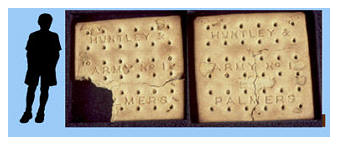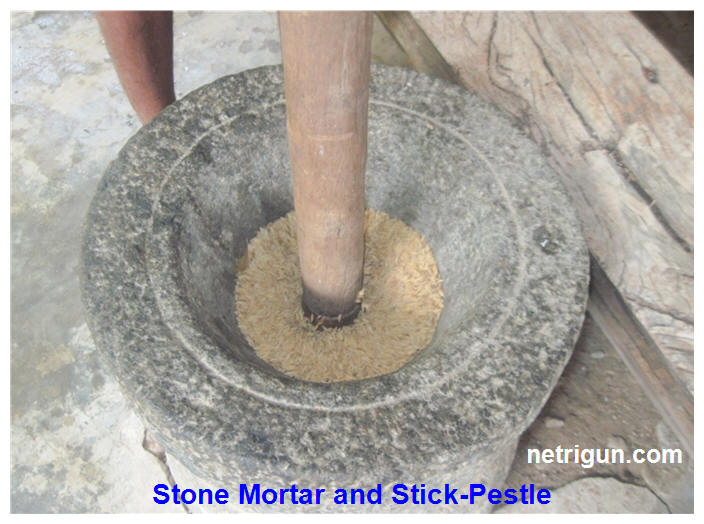|
The Boy and the Biscuit
Wordwar II British Biscuits Ration Veeraswamy Krishnaraj
June 5, 2016
There was a boy in a small village nestling by the highway going
north and south, east of India. He knew no other village or town besides his at
that age. The Dalit quarters were close to the highway. The upper
caste people had their houses way off the highway. There were two
temples, one dedicated to Draupadi and another to Siva, Parvati and
their children. There was a pond nearby, where the buffaloes cooled
off and the Dalit children splashed and romped. The upper caste
mothers did not allow their children to play in the murky waters of
the pond with the
buffaloes and the Dalit children.
Military trucks and white soldiers in camouflage plied along the
highway going south (Early 1940s). The children lined up by the
highway taking in the sight standing in the cool shade of Tamarind
trees. The soldiers were throwing biscuits to the children from the
speeding trucks. The Dalit children and the upper caste children
never saw biscuits before. The Dalit children picked up the biscuits
and ate. The upper caste children did not pick up the biscuits
because their parents told them not to pick and eat off dirt floors.
The drumbeats were rumbling at a distance coming from the
Dalit quarters. There was a death in the quarters and the drumbeats
marked the occasion. The story told by the children was that a Dalit
fell off the coconut tree while picking the fruits and died. The
caravan of army trucks drew the children away from the funeral
procession. A few days later, another drumbeat procession took
place. The story was a Dalit couple were getting married. Raman saw
the processions in the past at the
edge of the Dalit quarters,
unbeknownst to his parents. Later in years, Raman found out his
parents were egalitarian in their belief. His father exemplified
this belief by selling his cultivable land to a Dalit and refusing
to withdraw the offer when an upper caste man offered a higher
price. Raman walked off the side of the highway and asked his mother to make biscuits for him. She quickly made some. That was the beginning and the end of savoring the biscuit for Raman until he went abroad for pediatric training.
Later in years, the boy went to the adjacent village where his
mother was born. She was one among the five siblings, the youngest
among the girls 4th down the line but older than the boy. Maternal
grandpa was a stickler to a routine shave from a village barber once
a week. He had his own shaving knife. I saw the barber shave his
hairy hands up to the lower third of the arms and the pubic area.
There were two humongous trees in the huge backyard: A peepal tree
and a tamarind tree. During the spring season, the tamarind tree
sprouted tender leaves, flowers, and pods delightfully and mildly
sour. We gorged ourselves on them. Once I had sores (impetigo and
ecthyma) on my hands and feet. My mother took the fall leaves of the
peepal tree, ground them up with cooking oil and applied the herbal
mixture on the sores for days. Yes, they healed. I have the marks on
my legs as the sores (Ecthyma) were deep and left scars.
After late dinner and under dusk and early night, the adults and the
children assembled under the open sky in the moonlight, roasted
peanuts on the open flame and ate them. That was the time stories
about relatives and from Itihāsas (Ramayana and Mahabharata) were
told and retold by adults to the children, and parallels were drawn
with current events among people
and places in the villages, towns, and the country. Those days, no
current incident went without
reference to the Great Hindu Epics.
Villagers had
homemade firecrackers for Dīpāvaḷi (Festival of lights). The
next-door neighbor’s boy older than me decided to make his own
firecrackers. One of the ingredients was charcoal. He brought some
chunks of charcoal to make them into powder.
The charcoal
chunks were placed in the cavity of the mortar. A wooden pole served
the purpose of a pestle. The older boy pounded the charcoal and I
was asked to gather the errant flying bits and put them into the
cavity. As I did it, he rammed the pole into the cavity and my
finger. My right middle finger terminal phalanx was smashed and
bled. Adults were called for help. One adult brought a dollop of cow
dung and applied it as a coolant and treatment. Later, the adult cut
a cavity in a lime and capped it on my finger. Yes, it healed with a
transverse scar at the terminal one-third of my right middle finger.
The nail is intact. I wonder now as a pediatrician how I did not
contract tetanus and a bacterial infection. Maybe I had subclinical
infection with tetanus and developed immunity. I never had
immunization against common diseases during my childhood or during
my medical school days. We as medical students went to see patients
in the Diphtheria Ward. No one gave us vaccinations. It appears we
had subclinical infections and developed immunity against
diphtheria. When I was in the USA as an Attending pediatrician in a
hospital, we were tested for immunity against measles, rubella,
hepatitis A and B… I was
immune for all, though I never had immunizations. That goes to tell,
I was immunized against these diseases by subclinical infections
during my childhood.
I had yellow
jaundice as a child. I was visiting my aunt. The village medicine
man (this time, a woman) came and gave me ground leaves as internal
medicine. The jaundice cleared up. No complications. I have immunity
against Hepatitis-A.
The same boy,
who rammed my finger in the firecracker fiasco, as a teenager smoked
cigarettes. I was shirtless in the village at that time. He seared
my abdominal wall with the lit cigarette.
It healed and left me a scar
which over years disappeared. He was a relative on my maternal
grandpa’s side. His family was rich by local standards.
I met the boy,
then an adult decades later. We exchanged knowing glances but no
words transpired between us.
I was in the
higher secondary school in a town. A monkey used to come to the
backyard of our house belonging to my maternal uncle and sat on the
Spanish tiles of the house next door. The Margosa tree was on our
property. It was midday. I had nothing else to do. I took a stick,
and flailed it in all directions before the monkey on the roof. It
bared its teeth. I should have stopped my antics. It was a contest
between me and the monkey: Who will blink first? The monkey won’t
quit and I kept flailing the stick. It saw a threat and jumped on
me, bit me on the finger and took off. My parents took me to the
doctor. He gave me a shot. What it was, I did not know then or now.
It healed. That was the last time I saw that monkey.
|


